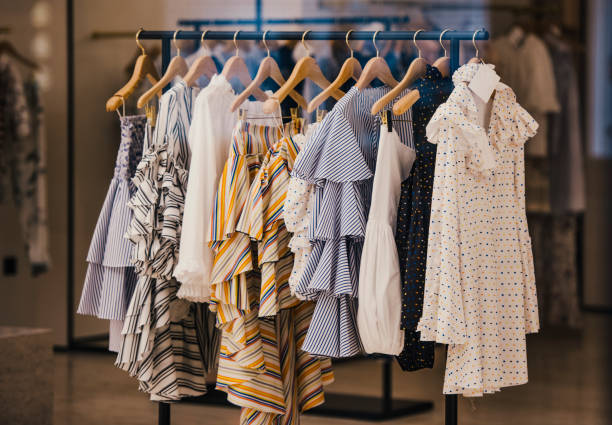Exploring the World of Sustainable Boutique Fashion Brands
A Deep Study the Globe of High-Fashion Runways: Recognizing Apparel as Art
High-fashion paths have become arenas where clothes transcends its utilitarian beginnings, developing into an innovative type of imaginative expression. Designers, similar to skillful artists, weave complex narratives through textile, color, and form, redefining and challenging standard standards appeal standards. These programs are more than simple screens; they are immersive experiences, where every stitch and joint tells a story rich with social importance and avant-garde technology. As we discover these sartorial eyeglasses, we must ponder: what role does style play in forming societal values, and exactly how does it reflect the ever-changing tapestry of human feeling and identity?
The Development of Runway Shows
The trajectory of path programs has changed substantially over the years, evolving from exclusive industry occasions to captivating spectacles that mix fashion with art. Typically, path shows made love affairs, kept in ateliers or tiny venues, mainly participated in by buyers and sector experts. These very early discussions focused on the garments' workmanship and commercial viability, using a functional and direct display of seasonal collections.
As the fashion market expanded, the nature of runway programs started to change. The 1970s and 1980s noted a transforming point, with designers seeking to identify themselves through more staged discussions. This era saw the rise of sophisticated collections, choreographed designs, and thematic stories, heralding a new age where the path came to be an experiential system. The programs transformed right into a kind of narration, where each collection communicated a distinctive narrative or principle.
In recent times, modern technology and social networks have actually better transformed path shows, making them accessible to a global target market. Livestreaming and digital systems have actually democratized fashion, permitting fanatics worldwide to witness these events in real-time (boutique fashion). This evolution reflects a wider cultural change, where high-fashion paths offer as a vibrant junction of style, innovation, and efficiency
Designers as Dreamer Artists
Just how have developers transcended their roles to come to be visionary artists? Developers in the high-fashion sector have obscured the lines in between useful garment creation and the conceptual world of art. This improvement appears in the method they approach their collections, not merely as garments yet as profound expressions of culture, feeling, and identification. By accepting imaginative techniques such as sculpture, paint, and progressive installments, developers craft garments that challenge standard fashion norms and elevate them to art types.
Visionary designers draw inspiration from a myriad of resources, including abstract art, historical references, and individual narratives. They possess a distinct capacity to imagine and appear concepts that push the limits of conventional style, often redefining aesthetic standards in the process. This innovative ingenuity is showcased via remarkable shapes, cutting-edge materials, and complex craftsmanship, which welcome viewers to experience style as more than simply wearable products.
Additionally, the path acts as a canvas for these musicians, where lights, songs, and established layout coalesce to produce immersive experiences. These discussions are not merely display screens of apparel but are managed performances that stimulate feeling and prompt thought, verifying the designer's duty as a true artist in the contemporary social landscape.
Social Impacts in vogue
Cultural tapestry weaves its complex patterns into the fabric of style, affecting developers worldwide. The dynamic interchange of cultural stories, website here traditions, and icons educates and influences collections that grace high-fashion runways. Designers diligently attract from their heritage or involve with societies distinctive from their very own, crafting garments that serve as visual stories. This cultural dialogue not just enriches the aesthetic diversity yet likewise fosters a deeper understanding and gratitude of worldwide identities.
The impact of society on style is usually seen in the reinterpretation of typical garments and patterns. The usage of Japanese robes, Indian saris, or African prints in modern fashion mirrors a blend of social authenticity and modern-day appearances. Developers such as Valentino's Pierpaolo Piccioli and Alexander McQueen's Sarah Burton have been recognized to incorporate abundant cultural concepts right into their couture collections, translating background into wearable art.

Technology in Fabric and Design
Innovation in textile and layout regularly reshapes the landscape of high-fashion, pushing borders and redefining possibilities. Developers are progressively exploring the combination of innovation, such as 3D printing, which enables for the creation of intricate structures that were previously unimaginable.
Furthermore, sustainability has come to be an essential motif in fabric technology. The apparel industry is experiencing a rise in using eco-friendly materials, derived from recycled plastics, organic fibers, and even eco-friendly components. These technologies not just supply new appearances and looks however likewise address critical have a peek at these guys environmental concerns. Developers are accepting these products to craft garments that are both visually striking and mindful of their ecological footprint.
In terms of design, speculative types and progressive silhouettes are constantly changing the path. By incorporating unconventional materials and advanced strategies, designers grow garments that obscure the line in between style and art, establishing brand-new criteria for creative thinking and expression in the high-fashion round.
Influence of Fashion on Society
Style wields an extensive influence on culture, functioning as both a reflection of social identity and a stimulant for social change. Through its development, fashion has mirrored social changes, encapsulating the zeitgeist of numerous ages. The flapper dresses of the 1920s symbolized a newfound sense of women's freedom, while the bold prints of the 1960s echoed the cutting edge spirit of the time. High-fashion paths, in certain, work as platforms for tough norms and redefining appeal criteria. Developers use these locations to address pushing social concerns, from sustainability to variety, thus forming public discourse.
Moreover, style has the power to bridge cultural gaps, fostering understanding and gratitude amongst varied groups. As globalisation increases, the cross-cultural exchange of style concepts comes to be significantly significant, advertising inclusivity and diversity. The rise of streetwear, originating from metropolitan subcultures, shows just how style can go beyond socio-economic limits, giving people a way of self-expression and empowerment.
In essence, style is not just concerning visual appeals; it is a vibrant pressure that affects worths, mindsets, and societal progression (boutique fashion). By continuously interacting with social and cultural currents, fashion stays an indispensable part of the collective human experience

Verdict
High-fashion paths work as vibrant arenas where clothing goes beyond performance to become a meaningful art form. Developers, akin to visionary musicians, coordinate collections that show identification, feeling, and social narratives, challenging standard aesthetics. The fusion of ingenious material and design, paired with fancy set layouts, lights, and music, creates immersive experiences that celebrate social variety. This intersection of fashion and artistry not only captivates audiences globally yet additionally influences social assumptions and promotes a much deeper appreciation for multiculturalism.

Social tapestry visit the site weaves its complex patterns right into the textile of style, influencing developers internationally.Style wields a profound influence on culture, serving as both a reflection of cultural identity and a driver for social modification.